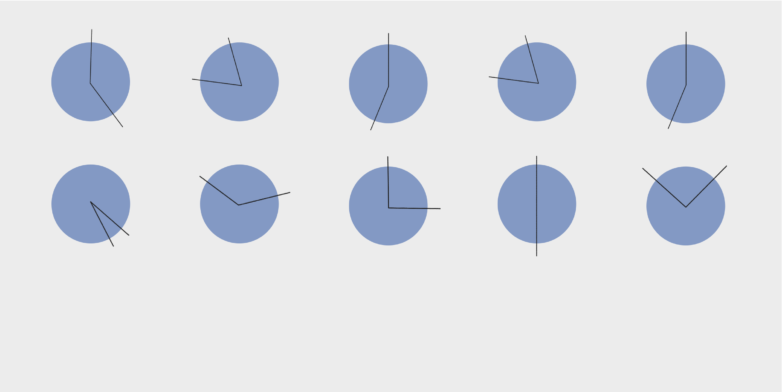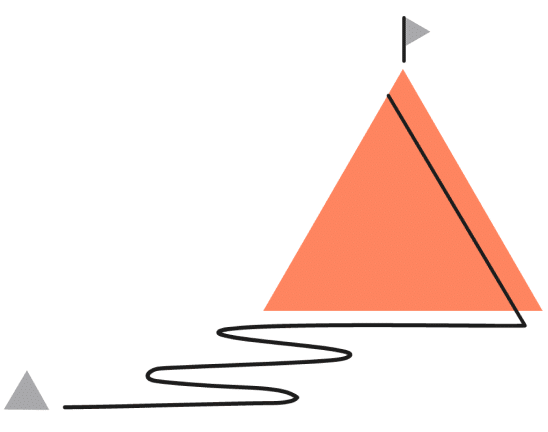What is Email Segmentation?
Email segmentation is a targeted marketing strategy that involves categorizing an email list into distinct segments based on specific criteria such as demographics, behavior, or preferences. It aims to deliver more personalized and relevant content to different groups within the audience.
Email segmentation is the practice of dividing a subscriber base into smaller, more manageable segments to tailor messages according to the unique characteristics and needs of each group.
Download Now: 9 creative email tactics
Why is Email Segmentation Important for Marketing?
This method is crucial for marketers seeking to enhance engagement, increase open and click-through rates, and ultimately drive better results from their email campaigns.
By acknowledging and addressing the diversity among subscribers, email segmentation enables marketers to provide a more customized and impactful communication experience, fostering stronger connections and improving overall campaign effectiveness.

How Does Email Segmentation Work?
Email segmentation operates by categorizing an email list into distinct segments based on specific criteria such as demographics, behavior, preferences, or engagement history. This process involves dividing the audience into groups that share common characteristics, allowing marketers to create more targeted and personalized email campaigns. The segmentation criteria can vary depending on the business goals, and it could include factors like purchase history, geographic location, or engagement level.
Once segmented, marketers can tailor their email content to address the unique needs and interests of each group, ensuring that recipients receive messages that are relevant and valuable to them. This targeted approach significantly improves the chances of resonating with the audience, fostering better engagement, and ultimately driving desired actions, such as conversions or brand loyalty.
The Benefits of Email Segmentation
Email Segmentation provides several impactful benefits that can transform your marketing performance and results:
- Relevance: By dividing your audience into segments based on specific criteria, you can send more targeted and relevant content to each group. This increases the likelihood of recipients engaging with your emails.
- Enhanced Personalization: Segmentation allows you to personalize your email campaigns according to the unique characteristics and preferences of each segment. Personalized content resonates better with recipients, fostering a stronger connection with your brand.
- Higher Open and Click-Through Rates: Relevant and personalized content leads to increased open and click-through rates. When recipients receive emails that align with their interests, they are more likely to open them and take the desired actions.
- Better Customer Retention: Segmented, personalized communication helps build stronger relationships with your audience. By understanding and addressing their specific needs, you increase the chances of retaining customers over the long term.
- Increased Conversion Rates: Targeted emails that cater to the specific interests of each segment can drive higher conversion rates. Whether your goal is to make a sale, encourage sign-ups, or promote a specific offer, segmentation improves the effectiveness of your campaigns.
- Optimized Resource Allocation: By focusing your efforts on the segments that are most likely to respond positively, you can optimize your resources. This ensures that your marketing efforts are efficient and effective, delivering a higher return on investment.
- Enhanced Customer Experience: Segmentation contributes to a better overall customer experience. When customers receive communications that align with their preferences and behaviors, they feel understood and valued, leading to increased satisfaction and loyalty.
In summary, email marketing segmentation is a powerful strategy that not only improves the performance of your email campaigns but also enhances the overall relationship between your brand and its audience.
Ways to Segment Your Email Lists
Segmenting your email lists is crucial for delivering targeted and relevant content to specific groups within your audience. Here are three effective ways to segment your email lists:
Demographic Segmentation:
Definition: Demographic segmentation involves categorizing your audience based on specific demographic attributes such as age, gender, location, income, education, and occupation.
How to Use It: Tailor your email content to resonate with the characteristics of different demographic groups. For example, a clothing retailer might create separate campaigns for male and female audiences, showcasing products and offers that appeal to each gender.
Behavioral Segmentation:
Definition: Behavioral segmentation considers how individuals interact with your brand, including their browsing history, purchase behavior, engagement with previous emails, and website interactions.
How to Use It: Send targeted emails based on past actions. For instance, if a customer frequently purchases a particular product category, you can send them recommendations or exclusive offers related to that category. Behavioral segmentation helps you anticipate and meet the specific needs of each segment.
Lifecycle Stage Segmentation:
Definition: Lifecycle stage segmentation involves categorizing subscribers based on where they are in their customer journey, such as new leads, active customers, or lapsed customers.
How to Use It: Tailor your messaging according to each stage of the customer lifecycle. New leads might benefit from welcome emails and introductory content, while active customers could receive loyalty rewards or product updates. For lapsed customers, targeted re-engagement campaigns can encourage them to return.
These email segmentation strategies empower you to create more personalized and engaging email campaigns. The key is to understand your audience’s diverse characteristics, behaviors, and journey stages, allowing you to deliver content that truly resonates with each segment.
eBook: 9 Creative Email Tactics
Download this eBook to find new ways to “wow” customers and cut through the clutter with engaging, relevant emails.
Email Segmentation Best Practices
Implementing email segmentation is a powerful strategy, but to maximize its effectiveness, it’s essential to follow best practices. Here are some key guidelines for successful email segmentation:
1. Collect Relevant Data:
Ensure you gather comprehensive and accurate data about your subscribers. This includes demographic information, purchase history, engagement metrics, and any other relevant details that can inform your segmentation strategy.
2. Define Clear Segmentation Criteria:
Clearly define the criteria for each segment based on your business goals. Whether it’s demographics, behavior, or lifecycle stage, having well-defined parameters ensures accurate segmentation and targeted content delivery.
3. Regularly Update Segmentation Data:
Keep your segmentation data up-to-date. Regularly review and update subscriber information to reflect changes in customer behavior, preferences, or other relevant factors. This ensures your segments remain accurate and effective over time.
4. Start with Broad Segments and Refine:
Begin with broader segments and progressively refine them based on performance metrics and customer feedback. This iterative approach allows you to continuously optimize your segmentation strategy for better results.
5. Test and Analyze:
Conduct A/B testing on different segments to identify what resonates best with each group. Analyze key metrics such as open rates, click-through rates, and conversion rates to understand the effectiveness of your segmentation efforts.
6. Personalize Content:
Craft personalized content for each segment. Tailor your messaging to address the specific needs, interests, and behaviors of each group. Personalization enhances engagement and builds a stronger connection with your audience.
7. Automation and Dynamic Content:
Leverage marketing automation tools to streamline the segmentation process. Use dynamic content to automatically adjust email elements based on individual subscriber characteristics, ensuring a personalized experience for each recipient.
8. Respect Subscriber Preferences:
Allow subscribers to set their preferences and opt-out of certain segments if they choose. Respecting subscriber preferences builds trust and helps maintain a positive sender-receiver relationship.
9. Monitor and Adapt:
Regularly monitor the performance of your segmented campaigns. Analyze key metrics and be prepared to adapt your segmentation strategy based on evolving customer behavior and market trends.
By adhering to these best practices, you can create targeted and effective email campaigns that resonate with your audience, drive engagement, and contribute to the overall success of your marketing efforts.

Why is it Important to Have an Email Segmentation Strategy?
Having an effective email segmentation strategy is crucial for several reasons. First and foremost, it allows businesses to deliver more personalized and relevant content to their subscribers. By dividing the email list into segments based on demographics, behavior, or other criteria, marketers can tailor messages to specific audience interests, increasing engagement and conversion rates.
Moreover, email segmentation enables businesses to send targeted communications to different customer segments, ensuring that the right message reaches the right audience. This strategy contributes to improved customer satisfaction and loyalty, as subscribers receive content that aligns with their preferences and needs.
In the context of SEO-focused content, implementing a robust email segmentation strategy aligns with best practices for digital marketing. The targeted approach enhances user experience, positively impacting metrics like click-through rates and reducing unsubscribe rates. For further insights into effective email segmentation strategies, check out our blog on Email Segmentation Strategies.
Getting Started with Optimove’s Email Marketing Solution
OptiMail, Optimove’s email personalization and delivery platform stand out as a comprehensive solution, empowering marketers at every stage of creating, delivering, and tracking highly personalized email marketing campaigns. Seamlessly integrated within the Optimove ecosystem, this platform offers a robust set of features tailored for personalized customer marketing.
Marketers benefit from an advanced email feature set, including a visual template editor, personalized content that updates upon email open, true cross-client preview, personalization tags linked to any database field, conditional template customization, delivery validation and testing, multi-brand email management, personalized real-time campaigns, and automatic product recommendations, replenishment reminders, and transactional/confirmation emails.
OptiMail is unparalleled in email personalization and hyper-targeting. Leveraging all available Optimove data and insights, such as customer database, customer model, activity tracking, predictive analytics, and AI recommendations, marketers can significantly increase email relevance. With the DynamicMail add-on, even emails opened long after being sent feature the most relevant messages, products, prices, and offers.
Optimove’s email solution goes beyond traditional email marketing by providing automatic product recommendation emails, replenishment reminders, and dynamic template content. The combination of cutting-edge technology and a dedicated deliverability support team ensures high deliverability rates without the need for additional integrations or external services. Getting started with Optimove’s email marketing platform means unlocking a new level of precision and effectiveness in your email campaigns.
Learn more about how Optimove’s Email Marketing solution can help with your email segmentation.
Get a personalized tour of Optimove
Let us show you how to go from tens to hundreds of segments


